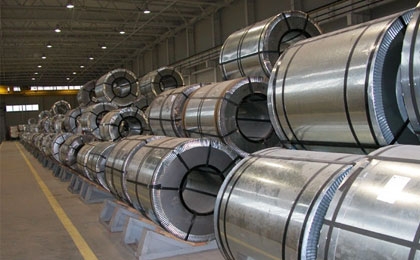NA thumbed-up 2013 targets

Despite some hiccups, Vietnam’s growth fundamentals remain in place - illustration photo
The resolution said the overall target of the government’s macro-economic monitoring for 2013 was “strengthening the stabilisation of the macro-economy, curbing inflation at a rate lower than in 2012 and achieving an economic growth rate higher than in 2012.”
Specifically, the economic growth rate is expected to grow about 5.5 per cent, while the consumer price index (CPI) rising about 8 per cent, export turnover increasing about 10 per cent, trade deficit about 8 per cent, budget overspending about 4.8 per cent of gross domestic product (GDP), and total development investment capital about 30 per cent of GDP.
“The key solutions to reach these targets will be the close combination between the fiscal and monetary policies in mobilising and using all resources for economic development,” said National Assembly Chairman Nguyen Sinh Hung.
Hung said enterprises would continue benefiting from bank loans at low lending rates which would be “suitable to the decrease of the CPI growth.” “All state regulations about lending rates and access to credit would be closely supervised.”
“The National Assembly call upon all people inside and outside Vietnam to stay united and make greatest efforts to help the country ride out difficulties and challenges, and successfully realise the socio-economic development plan for 2013,” he added.
However, many National Assembly members said in order for these targets to be reached, enterprises’ high inventory and bad debt levels must be resolved as soon as possible.
Delegate Le Phuoc Thanh from Quang Nam province said the government’s tight fiscal and monetary policies had resulted in major difficulties for local production including high inventory and bad debt, which would affect 2013’s socio-economic development.
“Enterprises told me that their inventory was very high and many of them have had to stop operation and had bank loans at an average 15 per cent per year. They need output markets and preferential loans at an annual lending rate of below 11 per cent,” said Thanh, who is an economic expert.
Minister of Construction Trinh Dinh Dung reported that by August 31, 2012, the property sector’s bad debt totaled VND203 trillion ($9.76 billion) and the property-related bad debt in Vietnam totaled VND1,000 trillion ($48 billion).
According to the General Statistics Office, the manufacturing and processing industry’s inventory by October 1, 2012 increased 20.3 per cent, which “remains high.” Meanwhile, the index for industrial production (IIP) in this year’s first 10 months augmented 4.5 per cent against the same period last year, when the IIP rose 7 per cent on-year. Total retail and service revenue in this year’s first 10 months climbed 17.1 per cent against last year’s corresponding period, when such revenue ascended 23.1 per cent on-year.
“For 2013’s socio-economic development, the government should more flexibly and consistently exercise its monetary and fiscal policies, so that enterprises will not face as many difficulties as they do in 2012,” said delegate Nguyen Huu Duc representing Dong Thap province.
“These targets are very difficult to reach due to local and external difficulties expected to continue in 2013. The government needs to soon clarify its solutions on resolving inventory and bad debt. At present, there have been no specific assessment on the situation of these bottlenecks,” said delegate Cao Sy Kiem from Thai Binh province.
What the stars mean:
★ Poor ★ ★ Promising ★★★ Good ★★★★ Very good ★★★★★ Exceptional
Related Contents
Latest News
More News
- PM orders investment model for North–South high-speed rail (December 22, 2025 | 17:43)
- First members of Danang International Finance Centre revealed (December 22, 2025 | 17:39)
- Securing capital and efficiency for Vietnam’s 2026-2030 growth ambitions (December 17, 2025 | 10:00)
- Driving double-digit growth through green and circular transformation in Vietnam (December 17, 2025 | 09:00)
- Vietnam bucking trend in the global M&A landscape (December 16, 2025 | 14:20)
- Vietnam’s green transition demands collective financial action (December 15, 2025 | 12:00)
- VIR workshop highlights capital and policy for sustainable development (December 15, 2025 | 11:00)
- National Assembly approves pilot mechanisms to accelerate major projects in Hanoi (December 12, 2025 | 11:29)
- Vietnam eases policy approval requirements, simplifies foreign and outbound investments (December 11, 2025 | 17:53)
- Unpacking new momentum in Vietnam’s M&A market (December 10, 2025 | 09:59)

 Tag:
Tag:





















 Mobile Version
Mobile Version